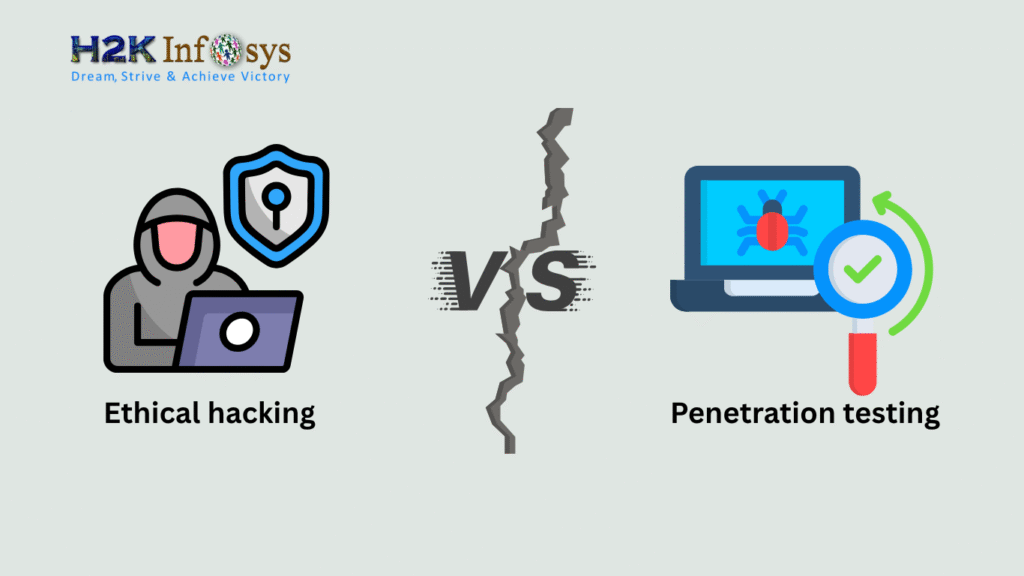In QA Automation testing (AT), efficiency, accuracy, and teamwork are paramount. Only someone with a thorough understanding of excellent tools will be able to keep up with this holy AT trio. And now, we’ll talk about GitHub Desktop, one of them. Although GitHub is a well-liked program for developers, QA professionals can also take advantage of its capabilities for effective test automation. Our QA training and placement program will provide more information about QA automation.
Projects GitHub Desktop QA Automation Suits Best
GitHub Desktop is ideal for a variety of software projects, especially those that use Git version control or are hosted on GitHub. However, the tool is not limited to these.
- Open source projects: By offering a simple-to-use interface for cloning, branching, and creating pull requests, GitHub Desktop streamlines developer contributions.
- Small- to medium-sized teams: GitHub Desktop provides an easy-to-use platform for managing branches, reviewing code changes, and working together on projects.
- Web development: GitHub Desktop is appropriate for a variety of web development workflows due to its proficiency in managing branches and merging code.
- Mobile app development: The version control tools and collaborative features of GitHub Desktop are useful for mobile app development, whether for Android or iOS.
- Personal projects: For developers working on side projects or doing coding experiments, GitHub Desktop is a great option. They can manage version control with ease without having to be command-line experts thanks to it.
- Front-end development: GitHub Desktop makes it easier for front-end developers to collaborate effectively and integrate their work into the main repository.
- Version control for game assets and source code is simplified with GitHub Desktop, which helps the development team manage changes.
- Education: When teaching version control and collaborative programming, GitHub Desktop can be useful for educational reasons and enriching QA resources.
QA Automation With GitHub Desktop
Even though GitHub Desktop isn’t typically used for software testing services, the collaborative characteristics of GitHub and its connection with Git encourage improved communication between the development and quality assurance teams. This characteristic is crucial for the majority of projects as it results in better software quality and quicker feedback cycles.
- Versioning for test environments: GitHub Desktop simplifies maintaining and testing different software versions. QA engineers can switch between branches or commits and clone particular repository versions.
- Verifying reported bugs and testing for regressions: QA experts can use GitHub Desktop to retrieve a particular commit or pull request that fixes a bug. They can use this to confirm the change and carry out regression testing to make sure the issue has been properly fixed without creating new issues.
- Collaborative testing: QA specialists can collaborate with developers and other team members efficiently thanks to GitHub Desktop. Within the GitHub repository, they can discuss problems, examine pull requests, and comment on code changes.
- Branch testing: QA experts can utilise GitHub Desktop to make local copies of separate branches when working on new features or fixes. This enables them to independently and concurrently validate the modifications with other team members.
- Code review for tests: Similar to how it does for application code, GitHub Desktop makes it easy to conduct code reviews for test scripts and modifications that are related to tests. To ensure test quality and consistency, QA teams can examine one other’s test cases, test data, and other artefacts.
- Test data management: Versioning and managing test data files with GitHub Desktop can help ensure that the right data is constantly used in various situations.
- Reporting Bugs and issues: Bug reports and issues can be submitted directly to the development team via GitHub Desktop by QA engineers. Additionally, with clear communication, developers can quickly discover reported cases and take appropriate action.
- Some CI/CT solutions interface with GitHub Desktop: CI/CT stands for continuous integration and continuous testing. The tool enhances the development and testing workflow by automatically triggering tests and generating reports when new code changes are pushed to the repository.
Getting Ready for Test QA Automation with GitHub Desktop
Let’s now go into the specifics of AT using GitHub Desktop. It’s crucial to properly configure the automation environment after installing the application and making a separate repository.
Getting the Repository Ready for QA Automation Testing
The following configurations must be taken into account by QA teams to make the repository appropriate for AT:
- Folder structure: Organise the folders in the repository to differentiate between the test cases, test data, and supporting files. It will make the test suite easier to maintain.
- Version control: Create a.gitignore file at the repository’s root for version control. Indicate which directories or files. Git version control shouldn’t keep track of build artefacts and temporary files, for example.
- Branching strategy: Choose a branching approach that works with the current test automation methodology. Common examples include “master” for code that is ready for production, “development” for code that is still being developed, and feature-specific branches for the creation of test cases.
Integrating Necessary Testing Frameworks and Tools
The integration of testing frameworks and tools comes once the repository is prepared. Depending on the PLs and technologies used in your project, you might incorporate well-liked testing frameworks like:
- Selenium WebDriver: Selenium WebDriver is a popular tool for automating browser interactions when testing web applications.
- JUnit or TestNG: Popular for Java-based projects, JUnit or TestNG provide test annotations and assertions.
- Pytest or Unittest: When writing and running test cases, Python developers should use Pytest or Unittest.
- Appium: For mobile app testing, Appium automates interactions with iOS and Android applications.
Conclusion
Make sure all necessary dependencies and setups are in place before beginning integration. Test automation with GitHub Desktop will be more effective with the right setup. Check out our QA training course to learn more.























